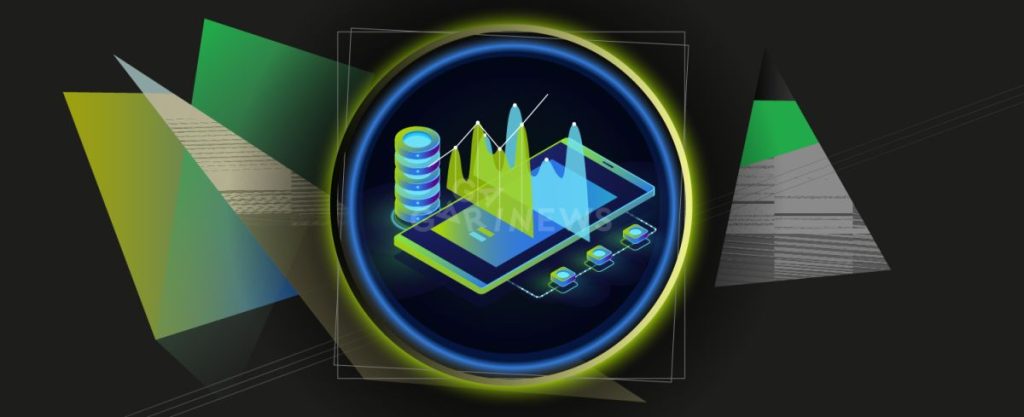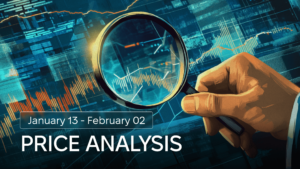Patterns in trading: the most popular crypto analysis figures

Patterns are one of the attributes of technical analysis, expressed as a graphical interpretation of a geometric pattern on a chart.
On this page
Despite the criticism from some traders, patterns are a good indicator of market sentiment, as they display the ratio between supply and demand in a more visual format. Thus, the user receives a convenient template for more successful trading.
Based on the fact that the price of an asset can go up or down, each pattern has its own opposite projection.
Here is a list of the most popular patterns that are often used in technical analysis:
Double bottom
A double bottom has a ‘W' shape and is characterized by a repeated test of a strong support level, after which the price reverses and begins an upward motion. “Double bottom” signifies the end of a downtrend and a shift towards an uptrend, so this pattern can be used as a signal to enter the order. Also, there is an opposite pattern that is called “Double top” and is used to highlight trend reversals.
Double bottom pattern
Double top pattern
Head and shoulders
This pattern contains three shapes – the first shoulder, the head and the second shoulder. Its appearance on the chart gives a signal to the trader about the potential decrease in the value of the asset. It is a good idea to work out the pattern within a strong resistance level, where sellers become more active and show strength.
Head and shoulders pattern
The opposite pattern is “Inverse head and shoulders”.
Inverse head and shoulders pattern
Triangles: symmetrical, ascending, descending
A symmetrical triangle typically signifies market uncertainty. This pattern is characterized by a price movement in a narrowing range, the output of which determines the further direction of the asset’s price.
Sometimes investors trade inside the pattern, counting on a price rebound from the edge of the triangle. But this method is quit
Symmetrical triangle pattern
The descending triangle is a pattern consisting of a support level and a trend line. The asset price is gradually decreasing and approaching a strong zone, after the breakdown of which the asset may continue to fall. It’s not necessary that this pattern will work out according to its name. If the trend line breaks down earlier than the support level, the pattern fails and becomes irrelevant.
The opposite pattern is an ascending triangle that consists of a trend line and a resistance level.
Descending triangle pattern
Ascending triangle pattern
Bull wedge
It’s a triangular pattern that consists of two converging trend lines. The price moves in a certain direction, but the fluctuation amplitude decreases until the moment when there is no one willing to buy the asset. It causes a breakdown and a sharp change of the trend:
Bull wedge pattern
The opposite pattern is “Bearish wedge”.
Bearish wedge pattern
Bull flag
This pattern appears due to a pause in the uptrend, so it gives the price to “rest” before continuing the movement.
The pattern consists of the flagpole (asset movement) and the banner, which is easily depicted on the chart by horizontal channels. You can enter the order if the base of the flag was broken and the price was fixed at the level of previous minimum price.
Bull flag pattern
The opposite pattern is “Bear flag”.
Bear flag pattern
It is important to understand that patterns are not giving absolutely correct analysis, and are not able to predict price directions with 100% accuracy . This is just a set of patterns in combination with other types of analysis (trend lines, support and resistance levels, trading volumes, etc.), that helps traders statistically improve their own forecast.
Patterns can bring good profits in the long run only if a trader combines them with a proper risk management, position calculation and the understanding that trading is all about working with probability.
The content on The Coinomist is for informational purposes only and should not be interpreted as financial advice. While we strive to provide accurate and up-to-date information, we do not guarantee the accuracy, completeness, or reliability of any content. Neither we accept liability for any errors or omissions in the information provided or for any financial losses incurred as a result of relying on this information. Actions based on this content are at your own risk. Always do your own research and consult a professional. See our Terms, Privacy Policy, and Disclaimers for more details.




































